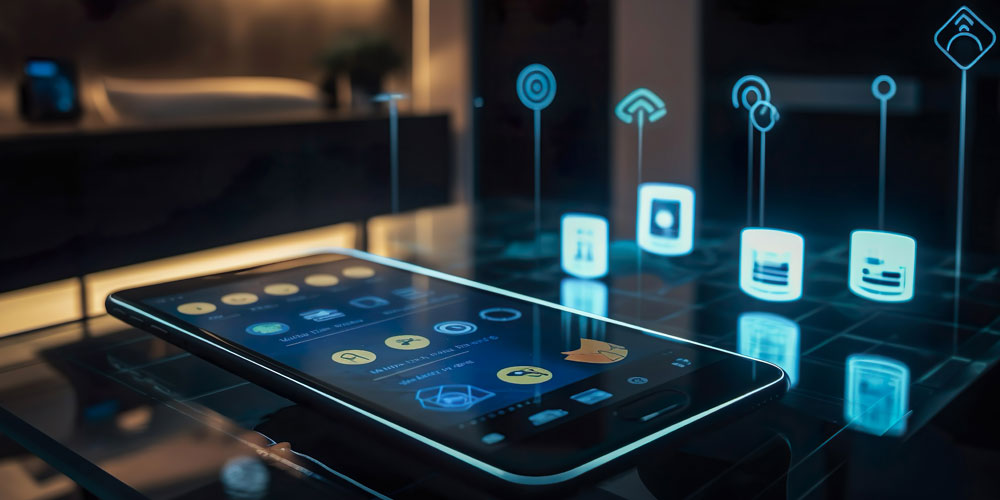What Is IoT-izing a Device?
We would like to define IoT-izinge as adding a connectivity layer to the device to establish a two-way data link between your physical device and cloud applications. This connectivity enables device communication, independent of the specific hardware or software in use. This could be a GPS tracker placed inside trucks sending GPS coordinates or industrial machinery sending diagnostics data that be used for preventive maintenance. The first step a user considers when IoT-izing a device is the connectivity itself, which we shall cover in the next section.
Choice of Connectivity
When creating an IoT device, the plethora of connectivity options available can be both a boon and a source of confusion, as each choice brings its own set of complexities. The ideal connectivity method is contingent upon the specific requirements of the application, encompassing factors such as data volume, range, power consumption, latency, and deployment environment. Some popular technologies include,
- Bluetooth: ideal for short-range, low-power applications.
- Wi-Fi: suitable for environments with reliable network infrastructure.
- Cellular: best for wide-area coverage and mobility.
- Ethernet: provides stable and high-speed connections, ideal for stationary devices.
- LPWAN: perfect for long-range, low-bandwidth applications (LTE-M, NB-IoT, LoRa).
Wi-Fi is a popular choice for indoor environments due to its ubiquity and relatively low cost, making it a convenient option for applications that require high data throughput within a limited range. However, the reliance on Wi-Fi introduces challenges such as network maintenance and potential security vulnerabilities, which are critical considerations if the IoT device handles sensitive information.
For IoT devices intended for outdoor or mobile applications, cellular networks like 4G, LTE, and the emerging 5G provide extensive coverage and mobility but can be power-intensive and entail higher operational expenses. Among other technologies, LoRaWAN or Sigfox offers a middle ground by delivering long-range connectivity with minimal power usage, however, these technologies may not support the high data bandwidth. Besides, these may entail complexities in initial network setup, in particular in case of applications requiring global deployment.
Cellular technologies such as LTE-M & NB-IoT are growing as excellent choices for IoT applications, offering a balance of range, power efficiency, and cost-effectiveness. LTE-M supports high data rates and low latency, making it perfect for real-time applications like asset tracking. NB-IoT is designed for devices transmitting small data amounts, prioritizing battery life for applications such as environmental sensors and smart meters. Both technologies ensure extensive indoor coverage and long-lasting battery performance, ideal for widespread IoT deployments.
Components of a Connected Device
In addition to the connectivity option, creating a connected device involves several components:
- PCB Hardware: the physical parts of the device.
- Firmware: programs that manage device functions.
- Connectivity: how the device communicates to the internet.
- Cloud Platform: the cloud software that interacts with the IoT device to receive, process, and store the data.
- Data Visualization: the cloud software where users interact with the data.
In addition to the above, there is also a device enclosure that needs to be built based on the installation conditions of the device.
These elements involve various teams, each operating on its own timeline. Each cycle uncovers new details and constraints that may cause delays and extra expenses, such as device security, testing, and certification.
Common Challenges in Building Connected Devices
For those unfamiliar with IoT device development, connectivity may seem straightforward, akin to using our smartphones. However, for developers in cellular IoT, integrating connectivity is a complex process that often requires substantial time and effort. Apart from adding connectivity, the following are some common challenges faced by users while developing IoT solutions.
- Integration challenges of components
- Complexity to program modems
- Building scalable systems
- Connectivity and coverage
- Long deployment lifecycle
- Security concerns
IoT-izing Made Simple
Meritech’s flagship product, monoZ, provides a comprehensive IoT connectivity solution utilizing 1NCE global connectivity combined with both hardware and cloud components. Integration of monoZ`s System-On-Module, known as monoZ:Jet, can be accomplished with minimal code as low as 2 lines, facilitating swift deployment.

Device data is securely transmitted via a closed network through monoZ`s no-code IoT cloud platform, monoZ:Link, ensuring secure and reliable delivery to any public or private cloud application. monoZ:Jet modules come pre-certified for radio certifications such as TELEC enabling automatic connection to cellular networks without additional setup. This makes it an ideal choice for integrating early in the design phase to avoid connectivity-related revisions. monoZ:Link simplifies the process of adjusting cloud endpoints using straightforward tools that require no coding, ensuring flexibility and scalability throughout the deployment.

By managing the entire connectivity process from device to customer cloud, monoZ enables development teams to focus on enhancing device features rather than dealing with connectivity complexities. This approach optimizes development cycles and enhances efficiency.
In conclusion, integrating IoT connectivity doesn't have to be a daunting task. By leveraging robust solutions and focusing on key components, you can bring your IoT project to life efficiently and effectively. Should your business require support in your IoT journey, Meritech’s extensive experience in this domain can be the enabler you might be looking for.
